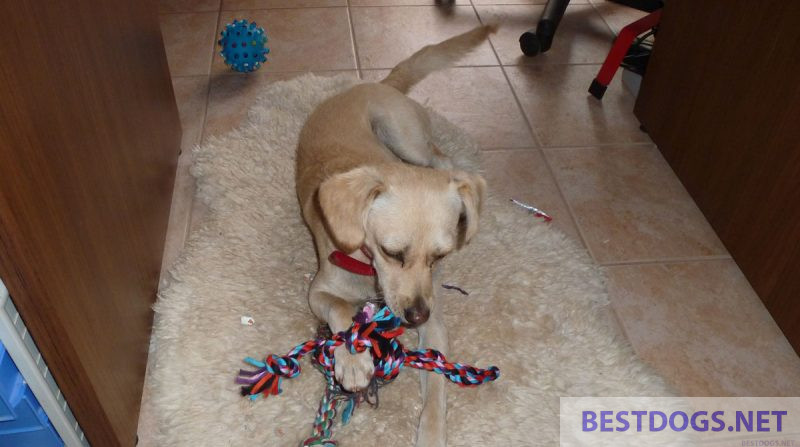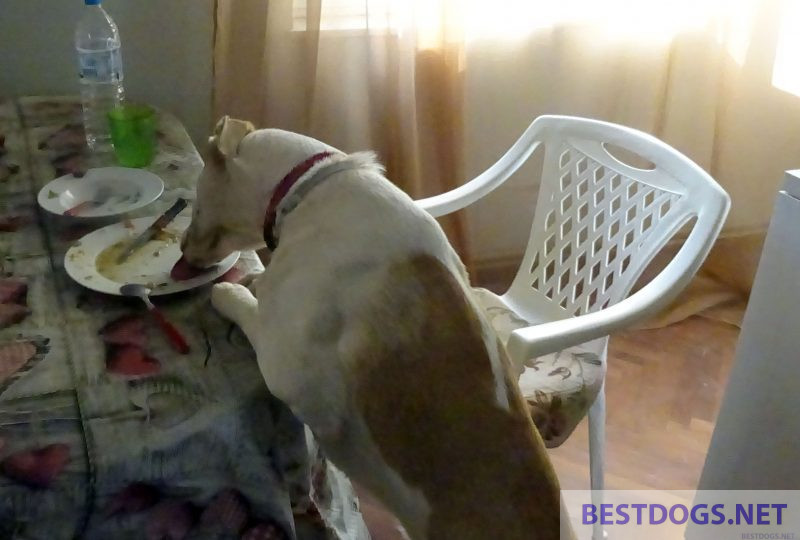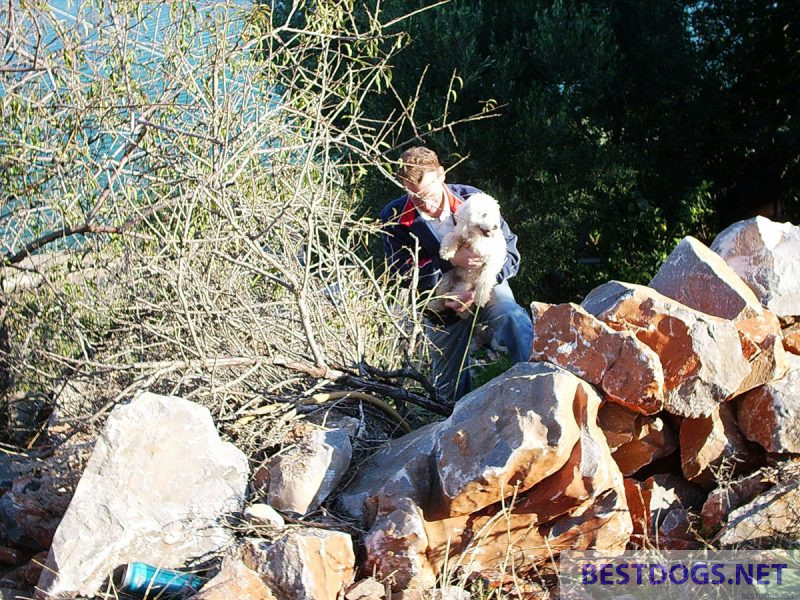Understanding and addressing aggressive behavior in dogs.
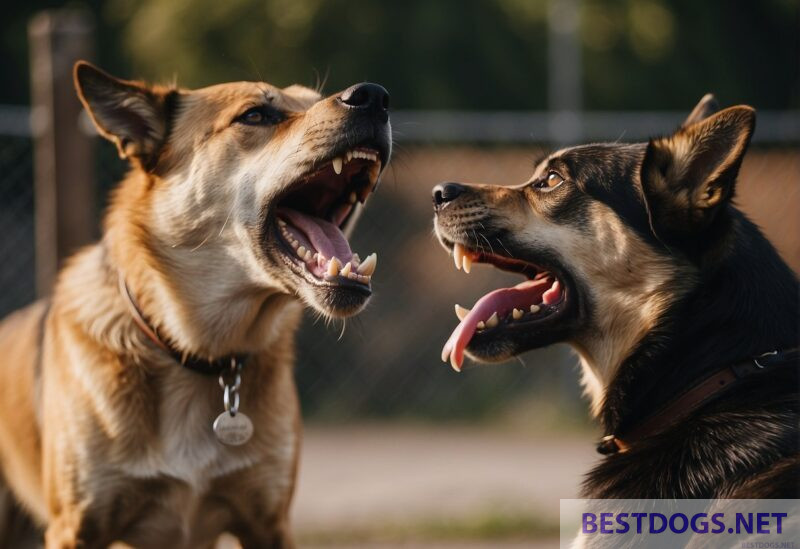
Aggressive Dogs: Understanding and Managing Canine Behaviour
Table of Contents
Aggression in dogs can manifest in various forms and is a significant concern for owners and the public alike.
It is a complex behaviour that stems from multiple factors including genetics, environment, and individual experiences.
Recognising aggression goes beyond the overt signs of growling or biting; it also includes more nuanced expressions such as baring teeth or snarling. Understanding these signs is crucial for early intervention and management.
Many people misjudge a dog’s aggression because they are very frightened by dogs that behave like predators rather than cuddly pets.
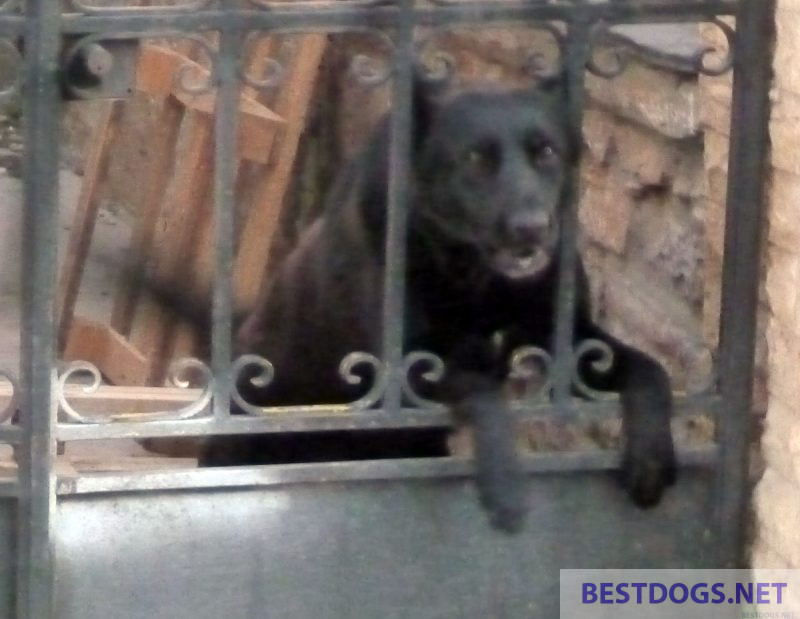
If a dog’s behavior suddenly changes, it is likely that a health problem is the cause.
Addressing aggressive behaviour in dogs involves investigating the underlying causes, which can range from territorial instincts to fear-related responses.
Triggers can be specific, such as the presence of other animals, or more general, like unfamiliar environments.
Effective management strategies are tailored to the individual dog, taking into account their history, breed tendencies, and the context of their behaviour.
Identifying and avoiding behaviours that may provoke aggression are essential steps in preventing aggressive outbursts.
Educating owners on dog body language and proper socialisation techniques can significantly reduce the occurrence of aggressive incidents.
When aggression does arise, consulting professionals who specialise in canine behaviour is often necessary to ensure the safety of both the dog and those around it. Learn about the signs of aggression and how to deal with potentially aggressive dogs to maintain harmony and safety.
Understanding Canine Aggression
Canine aggression encompasses a range of behaviours that dogs exhibit to express discomfort, fear, or desire to control a situation.
It’s crucial to recognise the warning signs of aggression to prevent escalation and ensure safety. These can include growling, barking, snapping, and biting.
Understanding the types of dog aggression is key to addressing and managing it effectively.
Fear aggression occurs when dogs act out due to fear, while territorial aggression is displayed when a dog protects its space.
Possessive aggression, also known as resource guarding, involves the defense of food, toys and sometimes also of caregivers or females in the pack.
Other types include:
- Defensive aggression: Similar to fear aggression but with a greater likelihood of striking out.
- Social aggression: Dominance-related behaviour within a social group.
- Frustration-elicited aggression: Occurs when a dog is frustrated by being restrained or unable to access something.
- Pain-elicited aggression: Arising from pain or discomfort.
- Sex-related aggression: Usually seen between males over access to mates.
- Predatory aggression: Instinctual behaviour, often triggered by moving objects.
- Maternal aggression: Displayed by mothers protecting their offspring.
Identifying the precise form of aggression is a first step towards developing an intervention plan with a professional.
Behavioural modification techniques and consistency in training can often mitigate aggressive behaviour, with a focus on preventing the dog from feeling the need to resort to these measures.
Aggression towards people
When a dog barks at, growls at or even snaps at strangers, the reason is often insecurity and a lack of socialization. Sometimes, however, it is also due to bad experiences or mistreatment and the person in question resembles the shadow from the past, e.g. because of the way they walk or because they have a walking stick with them.
In addition to a lack of socialization, aggression towards family members can also be caused by trust issues or an unclear hierarchy.
Aggression towards other dogs
The problem here is usually a lack of socialization, as the dog has not learned how to avoid fights. Other dogs only become aggressive towards other dogs when they have already been attacked several times.
Other dogs, on the other hand, usually strong and large, have already learned as puppies that their physical superiority means they can get away with almost anything against other dogs and will continue to do so as an adult dog if they have not been taught this early on.
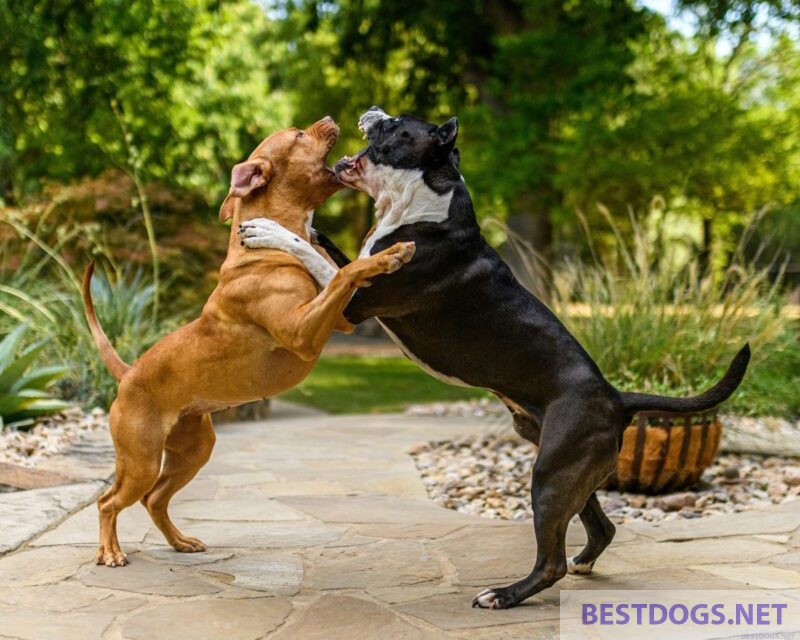
Protectiveness
Some dogs may display aggressive behavior out of protectiveness towards their owners or family members. They may perceive certain situations as a threat and react aggressively to ward off potential danger. While it is important for dogs to be protective, it is equally important to teach them appropriate ways to express their protectiveness without resorting to aggression. Training and socialization can help address this issue.
When a dog feels a strong bond with its owner or family, it naturally develops a sense of protectiveness. This protectiveness stems from the dog’s instinct to guard its pack and ensure their safety. It is not uncommon for dogs to exhibit protective behavior when they sense a potential threat or danger in their environment.
However, it is crucial for dog owners to understand that there is a fine line between protectiveness and aggression. While protectiveness is a desirable trait in a dog, aggression can pose a risk to both the dog and those around it. It is essential to teach dogs how to express their protectiveness in a controlled and non-threatening manner.
Training plays a vital role in helping dogs understand appropriate behavior in different situations. By providing consistent and positive reinforcement, owners can teach their dogs to respond to potential threats without resorting to aggression. This can be achieved through obedience training, where dogs learn to follow commands and respond calmly to various stimuli.
Socialization is another crucial aspect of addressing protectiveness in dogs. By exposing them to different environments, people, and animals from an early age, dogs learn to be comfortable and confident in various situations. This exposure helps them distinguish between real threats and harmless situations, reducing the likelihood of aggressive reactions.
Additionally, desensitization exercises can be beneficial in teaching dogs to manage their protectiveness. These exercises involve gradually exposing the dog to situations that may trigger their protective instincts, such as strangers approaching the owner or sudden loud noises. Through positive reinforcement and gradual exposure, dogs can learn to remain calm and controlled in these situations.
It is important to note that every dog is unique, and their level of protectiveness may vary. Some breeds are naturally more protective than others, while individual experiences and upbringing also play a significant role. Understanding and respecting a dog’s natural instincts while providing appropriate training and socialization is key to managing their protectiveness effectively.
In conclusion, protectiveness is a natural instinct in dogs, but it is essential to guide them in expressing it appropriately. Training, socialization, and desensitization exercises can help dogs develop a balanced and controlled response to potential threats. By ensuring that their protectiveness does not escalate into aggression, owners can have a well-behaved and confident companion who can provide a sense of security without posing a risk to others.
Recognising Aggressive Behaviour
Identifying aggressive behaviour in dogs is crucial for ensuring the safety of both the animal and those around it. Knowledge of the warning signs and behavioural indicators can help prevent aggressive encounters.
Warning Signs in Dogs
Growling, snarling, and showing teeth are clear warning signs that a dog may bite or attack.
Commonly, these behaviours manifest when a dog feels threatened or is in a state of anxiety. Awareness of such signs is key to avoiding potential harm.
- Bared Teeth: A visual cue that signifies discomfort or threat perception in a dog.
- Lunging: Sudden movement towards a person or another animal that may precede an attack.
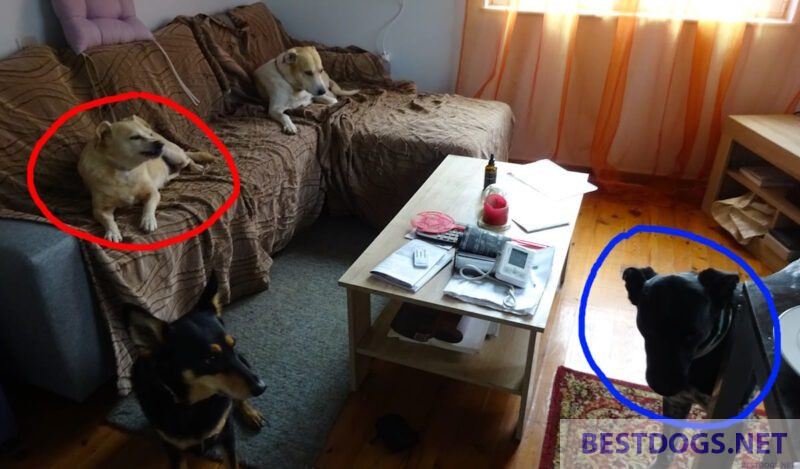
Behavioural Indicators
Behavioural indicators of aggression include non-vocal expressions such as stiff body posture, intense stare, or ears pinned back.
It’s essential to recognise these subtler signs to anticipate a dog’s actions.
- Stiff Body Posture: The dog may hold its body rigidly as a display of dominance or aggression.
- Intense Stare: Direct, focused eye contact that may signal the onset of aggressive behaviour.
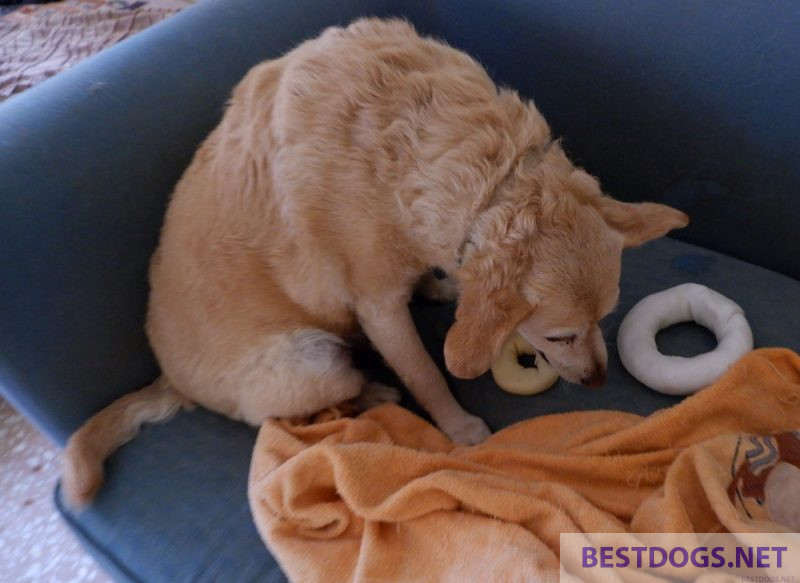
Factors Contributing to Aggression
Understanding dog aggression requires examination of various factors such as medical issues, genetic predisposition, and behavioural influences. It is crucial to consider these elements to develop effective interventions.
The Role of Fear and Anxiety
Dogs may display fear aggression when they encounter a situation that frightens them.
This reaction can stem from a lack of proper socialisation or past negative experiences.
Fear-induced behaviours may include growling, baring teeth, or biting when the dog feels cornered or unable to escape.
Impact of Pain and Medical Issues
Medical problems can contribute to pain-elicited aggression.
When dogs suffer from conditions that cause chronic pain, such as hip dysplasia or dental issues, their threshold for aggression can be significantly lowered.
Pain can make a dog more irritable and prone to snapping or biting.
Genetic and Lifestyle Factors
Some dogs may have a genetic predisposition to aggression.
Selective breeding practices have emphasised certain traits that can manifest as aggressive behaviours. Additionally, a dog’s lifestyle, including its environment and the behaviour of its owners, can influence aggressive tendencies.
Importance of Early Socialisation
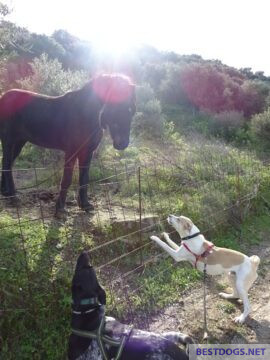
Early socialisation plays a pivotal role in preventing aggression.
Exposing puppies to various people, animals, and environments helps them develop confidence and reduces fear-based reactions.
Appropriate early socialisation can mitigate the risk of aggression developing as the dog matures.
One of the primary reasons for aggressive behavior in dogs is a lack of proper socialization during their early development stages. Dogs that have not been exposed to a variety of people, animals, and environments may become fearful or defensive, leading to aggression. It is important to expose puppies to different experiences in a positive and controlled manner to help them develop into well-adjusted and non-aggressive adults.
When puppies are not properly socialized, they may have difficulty understanding and interpreting new situations. They may perceive unfamiliar people or animals as threats, triggering a defensive response. This lack of exposure can lead to fear-based aggression, where the dog’s instinctual response is to protect themselves or their territory.
Proper socialization involves gradually introducing puppies to different people, animals, and environments in a positive and controlled way. This can include supervised interactions with other dogs, exposure to various sounds, sights, and smells, and meeting different types of people, including children, adults, and individuals wearing hats or uniforms.
By exposing puppies to these experiences, they learn to adapt and become comfortable in different situations. They develop confidence and learn how to communicate effectively with other dogs and humans. This early socialization also helps to prevent the development of aggressive behaviors later in life.
It is important to note that socialization should be a gradual process and should always be done in a safe and controlled environment. Rushing the process or exposing puppies to overwhelming situations can have the opposite effect and may actually increase fear and aggression.
If a dog has not received proper socialization during their early development stages, it is never too late to start. Professional trainers and behaviorists can help guide owners in creating a socialization plan tailored to their dog’s needs. This may involve gradually introducing the dog to new experiences, using positive reinforcement techniques to build confidence and trust.
In conclusion, a lack of socialization can contribute to aggressive behavior in dogs. By providing puppies with positive and controlled exposure to various people, animals, and environments, owners can help prevent the development of fear-based aggression and promote a well-adjusted and non-aggressive adult dog.
Approaching and Handling Aggressive Dogs
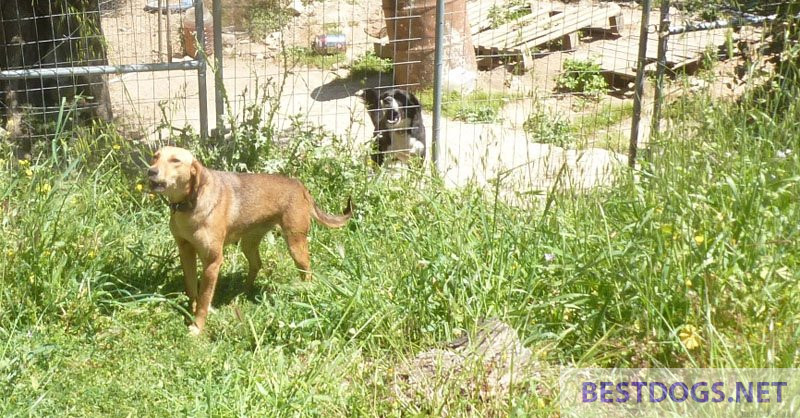
When dealing with an aggressive dog, understanding the dog’s intentions and body language is crucial.
One should approach cautiously and avoid direct eye contact, which can be perceived as a challenge.
Many people make the mistake of approaching a fearful dog directly in order to convince it of their good intentions, which only reinforces the hysterical reaction.
It’s essential to exhibit calm and assertive energy, as dogs often mirror the emotions of those around them.
Safety Precautions:
- Do Not Rush: Never approach an aggressive dog suddenly or hurriedly.
- Avoid Eye Contact: This can be seen as confrontational.
- Side Approach: Try to turn your body sideways and avoid facing the dog directly.
While handling an aggressive dog, consider the following steps:
- Remain calm and keep your voice level controlled.
- Give the dog space, do not corner it.
- Use a firm, but not loud, command if you have been trained.
- If a dog is barking or growling, slowly back away and do not run.
- Utilise barriers if available, such as a closed door or fence, between you and the dog.
In certain situations, behavioural modification techniques may assist, such as positive reinforcement to teach alternative behaviours.
It is advised to work with a professional who can ensure safe practice and correct behaviour interpretation.
Professional Advice:
- Seek guidance from veterinarians or animal behaviourists—those with expertise in dog aggression can provide support and management strategies tailored to individual cases.
Interventions for Aggressive Behaviour
In managing aggressive behaviour in dogs, it is essential to employ targeted interventions that address the underlying causes of aggression.
These methods range from behaviour modification techniques to professional support and medical intervention, each with its unique approach to mitigating aggressive tendencies in canines.
Behaviour Modification Techniques
Behaviour modification is a cornerstone in the management of aggression in dogs.
This process involves identifying triggers for the dog’s aggressive reactions and implementing strategies to alter these responses.
One fundamental technique within this approach is positive reinforcement, which rewards desired behaviour, thus encouraging its repetition.
Effective methods may involve desensitising the dog to particular stressors or counter-conditioning, where the dog’s negative response to a stimulus is replaced with a positive one.
Positive reinforcement training is a highly effective approach to tackle aggression in dogs. This training method involves rewarding desired behaviors and ignoring or redirecting unwanted behaviors. By rewarding calm and non-aggressive behavior, you can help your dog learn alternative ways to cope with their triggers and reduce their aggressive tendencies. Consistency and patience are key when using positive reinforcement training.
Implementing positive reinforcement training requires a deep understanding of your dog’s behavior and triggers. It is important to identify the specific situations or stimuli that provoke aggression in your dog. This could be anything from meeting new people or animals to encountering loud noises or unfamiliar environments. Once you have identified these triggers, you can begin the process of desensitization and counterconditioning.
Desensitization involves gradually exposing your dog to the trigger in a controlled and safe environment. For example, if your dog becomes aggressive when meeting new people, you can start by having a friend or family member approach from a distance. As your dog remains calm, reward them with treats, praise, or play. Over time, you can gradually decrease the distance between your dog and the trigger, always rewarding calm behavior.
Counterconditioning involves changing your dog’s emotional response to the trigger. This can be achieved by pairing the trigger with something positive, such as treats or play. For instance, if your dog becomes aggressive when encountering other dogs, you can start by having them see another dog from a distance while simultaneously giving them treats or engaging in a fun activity. This association between the trigger and positive experiences will help your dog develop a more positive and relaxed response.
Consistency is crucial when implementing positive reinforcement training. It is important to reward your dog every time they exhibit the desired behavior, even if it is just a small step in the right direction. This will reinforce the idea that calm and non-aggressive behavior is rewarding and will increase the likelihood of them repeating it in the future.
Patience is also key when using positive reinforcement training. It takes time for dogs to learn new behaviors and overcome their aggressive tendencies. It is important to remain calm and patient throughout the training process, as frustration or anger can hinder progress. Remember to celebrate small victories and acknowledge the progress your dog is making, no matter how small.
In addition to using positive reinforcement, it is important to create a safe and structured environment for your dog. This includes providing them with plenty of exercise, mental stimulation, and a consistent routine. A tired and mentally stimulated dog is less likely to exhibit aggressive behavior.
Overall, positive reinforcement training is a humane and effective approach to tackle aggression in dogs. By rewarding desired behaviors and providing a safe and structured environment, you can help your dog overcome their aggressive tendencies and develop into a well-behaved and happy companion. Remember, every dog is unique, so it may be beneficial to seek guidance from a professional dog trainer or behaviorist to tailor the training to your dog’s specific needs.
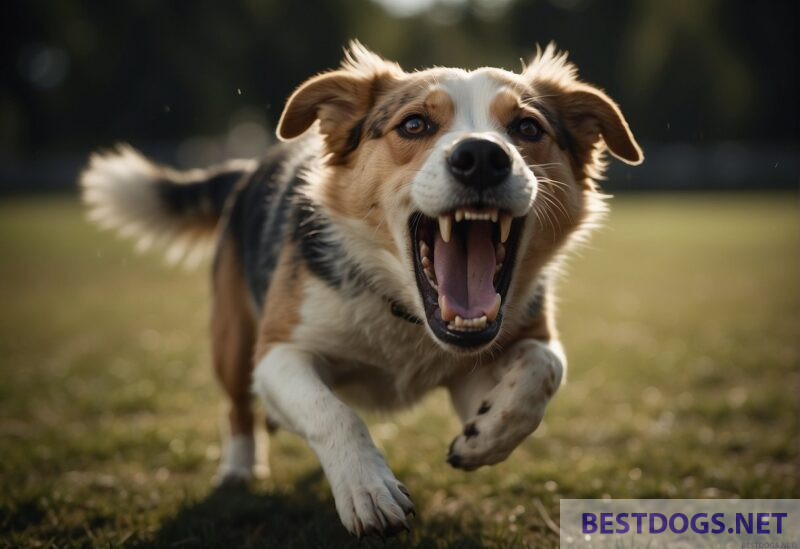
Professional Training and Support
Seeking the assistance of a professional dog trainer is highly recommended, particularly for those who face significant behaviour problems with their pets.
Trainers well-versed in canine aggression can offer personal guidance and tailor training programs to individual dogs.
Rehabilitation often includes a combination of obedience training to instil discipline and targeted exercises to manage specific behavioural issues.
Consistency and a deep understanding of canine psychology are critical components that professional trainers bring to the dynamic.
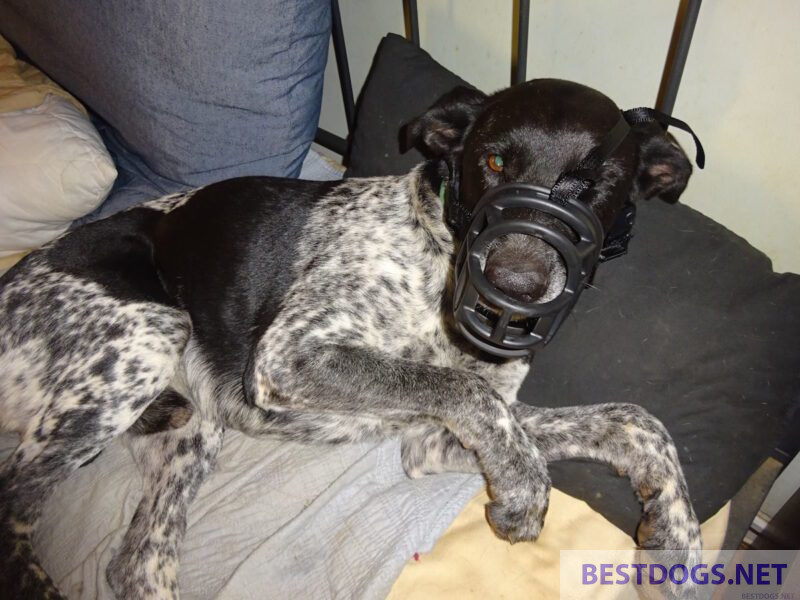
Muzzle
A muzzle is not too bad for a dog that is prone to aggression. It provides the necessary security during training or in everyday life on the street or with visitors in the house.
However, a basket-shaped model is highly recommended so that the dog can pant and eat treats.
The dog must first be accustomed to the muzzle through regular training and rewards, otherwise he will repeatedly remove it from his muzzle – usually quite successfully.
The Baskerville Ultra muzzle [*ad] has proven to be very suitable, as its shape can be adjusted to the dog’s muzzle with hot water.
Medical Interventions
In some cases, behaviour modification and training alone may not suffice.
If a veterinarian deems it necessary, pharmacological support through medication can also play a role in managing aggression.
Medications are typically used to treat underlying health issues or to reduce anxiety, which may contribute to aggressive outbursts.
However, medical intervention should always be accompanied by behavioural strategies to ensure a holistic approach to tackling the aggression.
Homeopathic remedies, such as Bach flowers or Tellington-TTouch, are a great help, especially in cases of aggression caused by fear.
Prevention of Aggressive Incidents
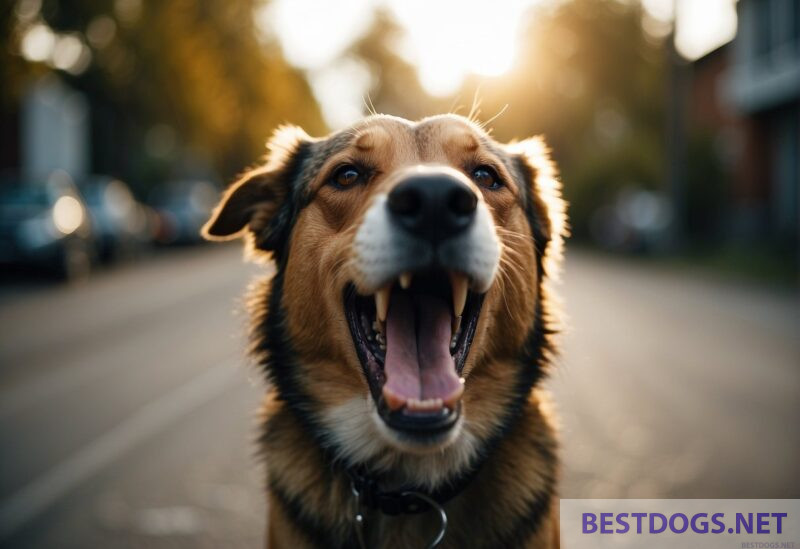
Preventing aggressive incidents in dogs involves understanding their behaviour and managing their environment to reduce the likelihood of aggression.
Proper training and early socialisation play pivotal roles in this process.
Avoiding Triggers and Managing the Environment
Aggressive behaviour in dogs can often be mitigated by recognising and avoiding situations that trigger such responses.
For instance, if a dog exhibits possessive aggression over food or toys, it is crucial to manage the environment by keeping these items out of reach when visitors are present.
- Identify triggers: Keep a log of incidents to determine common factors that provoke aggression.
- Environmental management: Create a safe, controlled space for the dog and limit exposure to stressful situations.
Proper Training and Socialisation
Training by a professional dog trainer is essential, especially for early socialisation of puppies.
They can help teach puppies and adult dogs alike to behave appropriately around humans and other animals.
- Early socialisation: Introduce puppies to various people, dogs, and environments in a controlled manner.
- Professional guidance: Engage a qualified trainer for personalised training plans addressing aggressive tendencies.
Understanding Dog Aggression and Interactions
Recognising the different types of canine aggression, such as redirected aggression or fear-based responses in small and fearful dogs, allows for more effective prevention strategies.
Understanding the signals that dogs give each other can also prevent miscommunication that may lead to aggression.
- Learn dog language: Observe body language and vocalisations to better interpret a dog’s state of mind.
- Behavioural cues: Pay attention to stiffening, growling, or avoidance, which can precede aggression.
Legal and Ethical Considerations
When dealing with aggressive dogs, owners and authorities must navigate complex ethical dilemmas and legal frameworks. These touch on the responsibilities of ownership, as well as the consequences following a dog attack.
Responsibilities of Dog Owners
Dog owners are legally obligated to ensure their pets do not pose a danger to the public.
The ownership of an aggressive dog comes with the expectation that they will take all necessary measures to manage their pet’s behaviour.
This includes securing enclosures, adhering to leash laws, and providing proper training to mitigate aggressive tendencies.
When owners fail to control their pets, they may face legal consequences under legislation like the UK’s Dangerous Dogs Act.
This act underscores the importance of responsible pet ownership and the potential for strict liability in the case of an attack.
Implications of Dog Attacks
Should an aggressive dog attack occur, the legal ramifications are significant.
The owner might face criminal charges, particularly if negligence can be demonstrated.
Ethically, the decision to euthanise an aggressive, but otherwise healthy, dog is fraught with moral complexity.
In practice, ethical considerations often revolve around balancing the rights and welfare of the animal against the safety of the public.
Moreover, the aftermath of a dog attack may lead to legal scrutiny not only over the specific incident but also regarding breed-specific legislation and its efficacy in preventing such occurrences.
Advice and Resources for Dog Owners
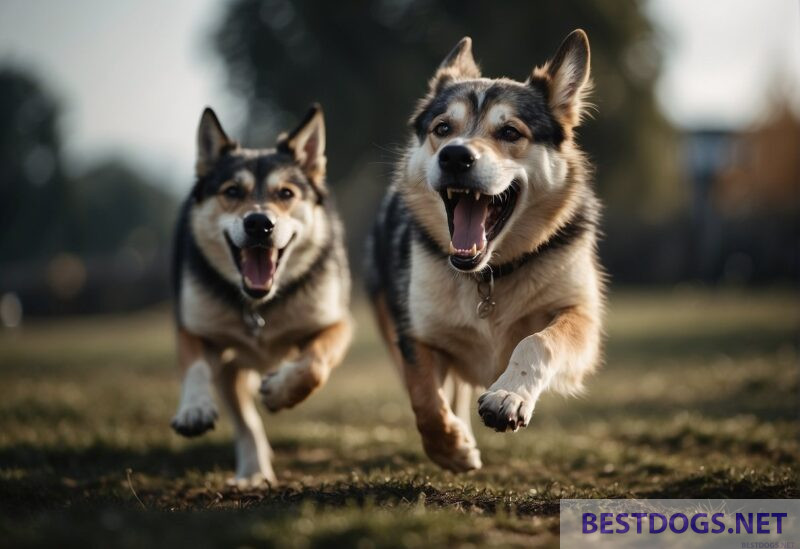
Addressing the issue of canine aggression requires professional guidance and community support. Dog owners should seek qualified experts and leverage the experience of support groups to handle aggressive behaviour effectively.
Finding a Qualified Animal Behaviourist
When owners face challenges with an aggressive dog, the expertise of a licensed animal behaviourist is invaluable.
It is important to find a professional who holds credentials from a recognised body, such as the Association for the Study of Animal Behaviour (ASAB) or the Animal Behaviour and Training Council (ABTC).
These professionals possess the necessary training to assess and devise a behaviour modification plan tailored to each unique situation.
For example, the Dogs Trust provides detailed guides on Taking aggressive dogs to the vet, accentuating the importance of understanding your dog’s needs and preparing for veterinary visits.
Support Groups and Communities
Joining a support group or community can greatly assist owners of aggressive dogs.
These groups offer emotional support, practical advice, and tips from individuals who have experienced similar challenges.
Moreover, sharing stories and solutions can be a rich resource for owners.
The PDSA, one of the U.K.’s leading veterinary charities, stresses the importance of support when dealing with aggressive pets and provides contact details for helpful organisations like the Blue Cross pet behaviour helpline.
Owners can also engage with online forums and social media groups specifically tailored to their needs, facilitating a safe space to discuss concerns and seek advice from others, including professional dog trainers and veterinarians.
While consulting with professionals is key, the collective wisdom of a community can also offer comfort and practical strategies for managing aggressive behaviour in dogs.
Frequently Asked Questions
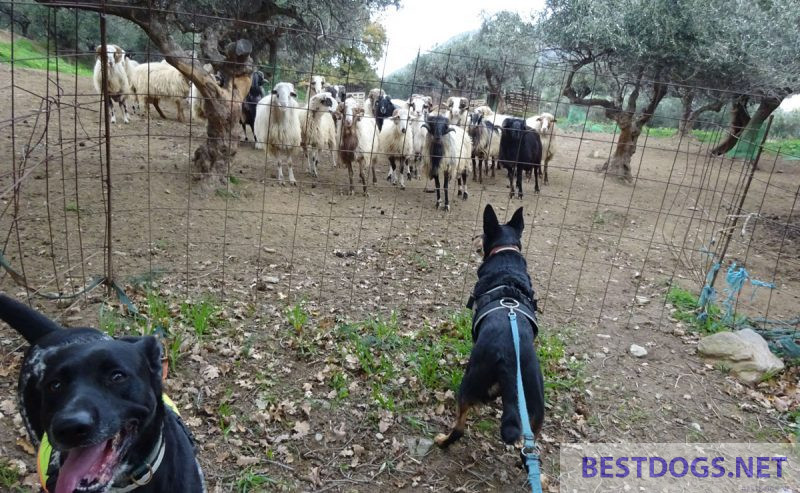
Understanding canine aggression involves recognising signs, exploring calming methods, and assessing training approaches. It also requires insight into sudden changes in behaviour and considerations for rehoming.
How can one recognise the signs of aggression in dogs?
One might notice a dog displaying aggression through specific behaviours, such as growling, snapping, or barring teeth.
Other signs include a stiff posture and direct, intense eye contact.
What methods are effective in calming an aggressive dog?
Effectively calming an aggressive dog may involve employing calming signals, ensuring a quiet environment, and seeking the guidance of a professional who can tailor a behaviour modification plan.
Can aggressive behaviour in dogs be successfully trained out?
While aggressive behaviour in dogs can often be managed and improved, it’s important to set realistic expectations.
Working with experienced trainers or behaviour consultants is crucial in these cases.
Why might a dog suddenly display aggressive behaviour towards its family?
Sudden aggression towards family members may be due to various reasons such as illness, fear, or resource guarding.
A thorough medical examination can help determine any underlying health issues.
What are the options for rehoming an aggressive dog?
Rehoming an aggressive dog should be approached with caution and full disclosure of the dog’s behaviour to the new owner or rescue organisation. Professional assessment is advised to ensure the safety of all parties.
In what ways do aggressive dogs pose a danger to humans?
Aggressive dogs may pose a risk through bites or attacks, which can result in physical injuries.
It is essential to address aggressive behaviours in dogs promptly to minimise risks to humans and other animals.


